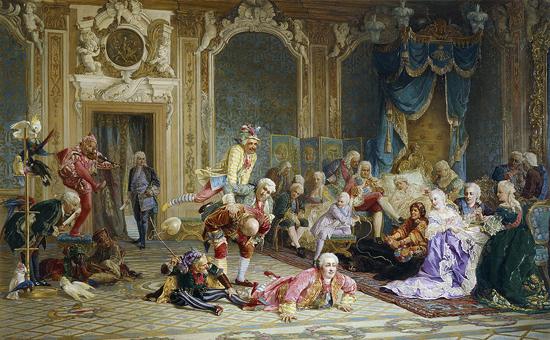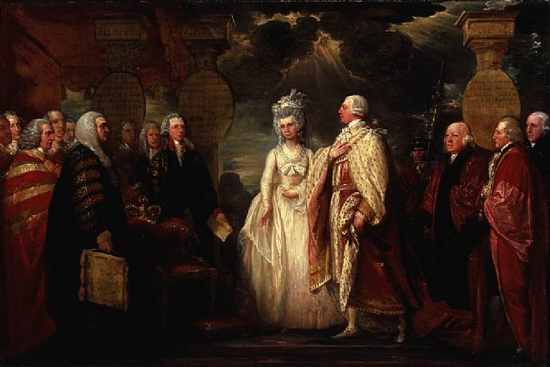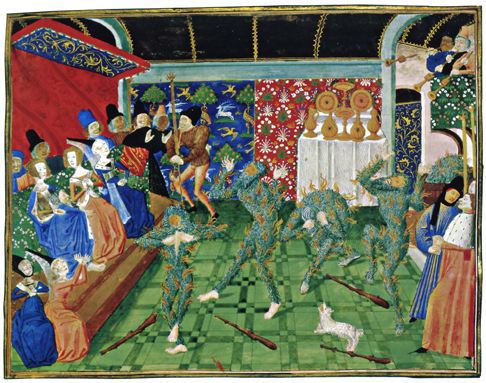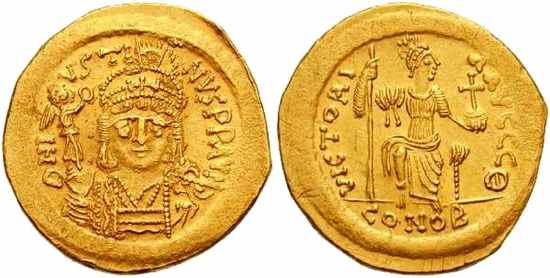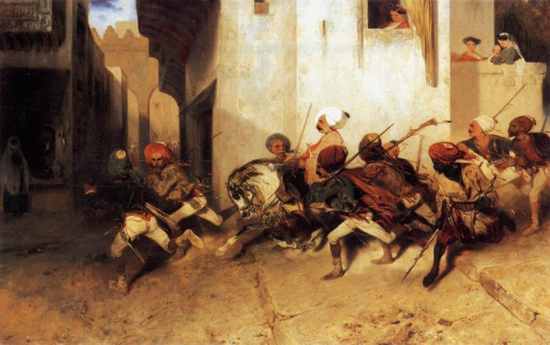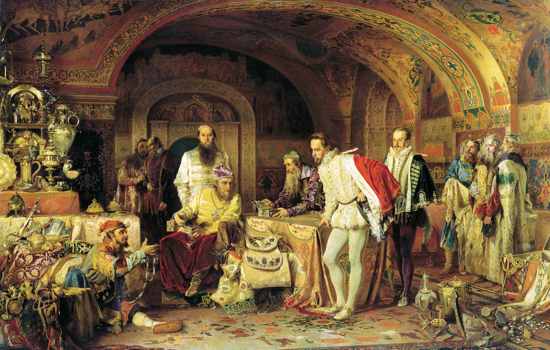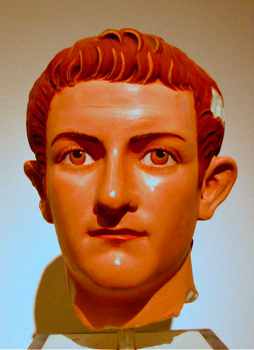Anna, who ruled as Empress of Russia from 1730 – 1740, was not born to the throne – she was made Empress by the Supreme Privy Council of Russia. The council had hoped that she would feel indebted to them for her position and act as a puppet ruler – but, little did they know, Anna had other plans in mind. One of her first acts was to restore the secret police, to do her bidding. Finding favor with the Royal Guards, her power became uncontrollable, and she began a ten year reign tormenting the aristocrats who made her ruler. In the most famous example of her insanity, Anna hooked up one of the old princes with her maid, because she had discovered that his, now dead, wife had been Catholic. This seems rather innocuous, but what happened next is not: Anna organized the wedding and had a special palace made of ice for the occasion. She made the wedding party dress as clowns and spend the night in the ice-palace… in the middle of one of the harshest winters Russia had seen in years. Fortunately for Russia, her reign was cut short by her death at the age of 47.
George III of England is probably the second most well known insane ruler in history (second to item 1 on this list), largely due to the famous movie, “The Madness of King George.” King George III sat on the throne of England from 1760-1820, and it was on his watch that the American colonies were lost – perhaps his greatest legacy. He most likely suffered from the hereditary disease of porphyria, which also afflicted Mary, Queen of Scots. The monarch’s illness presented England with a difficult problem: What do you do when a ruler becomes irrational? When the king became ill in 1788, his prime minister, William Pitt the Younger (1759-1806), and the queen ran the government on his behalf – and, later, his son ruled as regent. In his later years, as his insanity grew, he spent his time in isolation, and was often kept in straight jackets and behind bars in his private apartments at Windsor Castle. In recent times there has been some speculation that King George was driven insane by the treatments he received for his alleged insanity.
King Charles VI was crowned King of France in 1380, when he was only eleven years old. Apparently, he was a good king before insanity took over, because he was originally known as Charles the Well-Loved. It later became evident that he was insane, so his moniker was changed to Charles the Mad. Accounts of the king’s first fit of madness state that King Charles VI became agitated at the sound of a dropped spear, while traveling with his men. He then murdered one of his own knights and, reportedly, a few other men, though accounts vary. After this incident the king fell into a coma. The symptoms of the king’s insanity progressed in later years and were much varied. There were times when King Charles VI did not know who he was, and could not recognize his wife and children. Several months of his life were marked by his refusal to bathe. He even spent some time under the impression that he was made of glass. King Charles VI of France died, a madman, in 1422.
Justin II was Eastern Roman (Byzantine) Emperor from 565 to 578. His reign included war with Persia and the loss of large parts of Italy. After two disastrous campaigns, in which the Persians overran Syria and captured the strategically important fortress of Dara (Mesopotamia), Justin reportedly lost his mind. The temporary fits of insanity into which he fell warned him to name a successor – Tiberius II Constantine. According to John of Ephesus, as Justin II slipped into the unbridled madness of his final days, he was pulled through the palace on a wheeled throne, biting attendants as he passed. He reportedly ordered organ music to be played constantly throughout the palace in an attempt to soothe his frenzied mind, and it was rumored that his taste for attendants extended as far as eating a number of them during his reign.
Ludwig II became king of Bavaria, in 1864. During his reign, Ludwig II spent all of his personal funds on the construction of fairy tale castles. He was painfully shy, and ill-equipped for his duties as king. He spent hardly any time governing his people, and had a strong aversion to public appearances. In 1866, Ludwig was accused of being insane. Whether his eccentric behaviors were caused by insanity is unknown. The man who declared him insane had never examined him. He was deposed on the grounds of insanity at the request of his uncle, who may have wanted control of the government. The day after the king’s deposition, he was found dead in a pond, along with the very doctor who had declared him insane.
One of the most famous Ottoman Sultans, Ibrahim was released from the Kafes (a special prison for potential heirs to the throne), and succeeded his brother, Murad IV (1623–40), in 1640, though this was against the wishes of Murad IV, who had ordered him killed upon his own death. Ibrahim I was allowed to live because he was too mad to be a threat. Ibrahim brought the empire almost to collapse in a very short space of time. He is known to have had an obsession with obese women, urging his agents to find the fattest woman possible. A candidate was tracked down in Georgia, or Armenia, who weighed over 330 pounds, and was given the pet name Sheker Pare (literally, “piece of sugar”). Ibrahim was so pleased with her that he gave her a government pension, and the title of Governor General of Damascus. When he heard a rumor that his concubines were compromised by another man, he had 280 members of his harem drowned in the Bosporus Sea. He was seen feeding coins to fish living in the palace’s pool. These feats earned him the nickname “mad” – for rather obvious reasons.
Ivan IV, or Ivan the Terrible, had a childhood that was scarred by the loss of both of his parents, and abuse at the hands of the Russian government. After the death of his mother, when Ivan was seven, he was left to be tormented by the elite members of the Russian government. He was severely abused and mistreated by them in the very palace that was rightfully his. Abuse gave way to insanity, and Ivan began venting his frustrations by torturing small animals. In 1544, when Ivan IV was fourteen, he seized control of Russia by feeding the head of the government to a pack of dogs. After that it seemed that Ivan IV had changed his ways. He made a public confession of his cruel acts to his people by way of an apology. It only later became clear that he was dangerously insane. Ivan IV was a very good Tsar in many ways. He created laws that were aimed toward class equality. However, when he began massacring his people, he showed the same ignorance of class distinction. Ivan IV was also guilty of killing his oldest, and most beloved, son by his own hand. You may or may not believe that acts of cruelty constitute insanity, but if you consider the likes of Hitler and Hussein to have been insane, then Ivan the Terrible certainly was as well.
Maria’s madness was first officially noticed in 1786, when she had to be carried back to her apartments in a state of delirium. The queen’s mental state became increasingly worse. The year of 1786 saw her husband lose his life, in May. Maria was devastated and forbade any court entertainments and, according to a contemporary, the state festivities resembled religious ceremonies. Her state worsened after the death of her eldest son, aged 27, from smallpox, and of her confessor, in 1791. After the end of 1791, her mental state seemed to be becoming even worse. In February, 1792, she was deemed mentally insane, and was treated by John Willis, the same physician that attended George III of the United Kingdom (note the final sentence of item 9). He wanted to take her to England, but that was refused by the Portuguese court. The young prince John took over the government in her name, even though he only took the title of Prince Regent in 1799. When the Real Barraca de Ajuda burnt down, in 1794, the court was forced to move to Queluz where the ill queen would lie in her apartments all day, and visitors would complain of terrible screams that would echo throughout the palace. Maria died at a Carmelite convent in Rio de Janeiro in 1816.
Prince Sado was born in 1735, and was married nine years later. It is said that his father, the king of Korea, began hating his son when Sado was very young. Sado had a son of his own when he was seventeen. After the birth of his son, Sado became sick with the measles. He recovered from his illness, but it seemed to have triggered a deep-seated insanity that lurked within the prince. The king became even more disgusted with his son. The king was said to have washed out his mouth, cleaned his ears and changed his clothes whenever Sado talked to him. Prince Sado’s insanity first presented itself as nightmares and delusions. These episodes were soon followed by violent attacks. By 1757, Sado was physically abusing his servants, and raping any woman who denied him. Sado murdered and raped on a whim. He even took to stalking his own sister. The king eventually tired of the terror his son inflicted. The king ordered Sado into a rice chest, and the prince complied. The king then had the rice chest nailed shut. Sado spent eight days in it before he finally died. Perhaps the king’s hatred contributed to Sado’s insanity. Either way, the cruel prince died a cruel death and, in the king’s eyes, justice was served.
Caligula has appeared on Listverse before, but he certainly needs to be on this list and deserves number one spot. Here is a summary of some of the many activities in his life as ruler of arguably the greatest empire in history: He attempted to instate his favorite horse, Incitatus (“Galloper”), as a priest and consul, and ordered a beautiful marble stable built for him, complete with chairs and couches, on which Incitatus never sat. Once, at the Circus Maximus, the games ran out of criminals, and the next event was the lions, his favorite. He ordered his Guards to drag the first five rows of spectators into the arena, which they did. These hundreds of people were all devoured for his amusement. A citizen once insulted him to his face, in a fit of rage, and Caligula responded by having him tied down and beaten with heavy chains. He made this last for 3 months, having the man brought out from a dungeon and beaten, until Caligula, and the whole crowd that gathered, were too offended by the smell of the man’s gangrenous brain, whereupon he was beheaded. Caligula’s favorite torture was sawing, which topped another list on this site. The sawblade filleted the spine and spinal cord, from crotch down to chest, and the victim was unable to pass out due to excess blood to the brain. He also relished chewing up the testicles of victims, without biting them off, while they were restrained, upside down, before him. He had another insulter, and his entire family, publicly executed, one after another, in front of a crowd. The man and wife were first, followed by the oldest child and so on. The crowd became outraged and began to disperse, but many stayed in morbid fascination. The last of the family was a 12 year old girl, who was sobbing hysterically at what she had been forced to watch. A member of the crowd shouted that she was exempt from execution as a virgin. Caligula smiled and ordered the executioner to rape her, then strangle her, which he did. He publicly had sex with his three sisters at banquets and games, sometimes on the table, amid the food. He was finally murdered by the Praetorian Guard and some senators, leaving the Circus Maximus after the games. His body was left in the street to rot, and dogs finally ate it. He had ruled for 4 years. Portions of this text are available under the Creative Commons Attribution-ShareAlike License; additional terms may apply. Portions of text are derived from Wikipedia.
